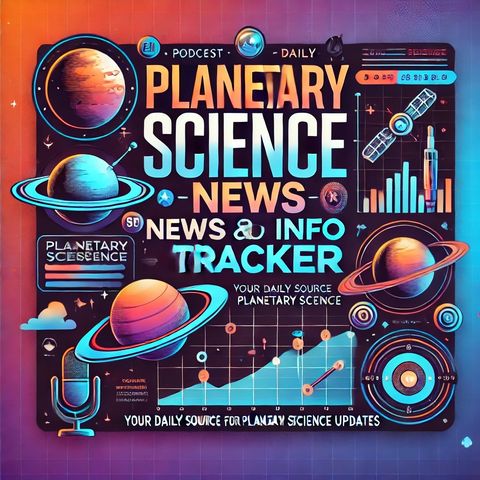Interactive Maps of Apollo 15, 16, and 17 Missions Now Available

Download and listen anywhere
Download your favorite episodes and enjoy them, wherever you are! Sign up or log in now to access offline listening.
Interactive Maps of Apollo 15, 16, and 17 Missions Now Available
This is an automatically generated transcript. Please note that complete accuracy is not guaranteed.
Description
Interactive Apollo 15, 16, and 17 Maps Available Now! Imagine it’s the early 1970s. You’re a scientist helping lead the Apollo missions to the Moon, trying to figure out where...
show moreImagine it’s the early 1970s. You’re a scientist helping lead the Apollo missions to the Moon, trying to figure out where next to send the astronauts. Where should they go? As a planetary scientist, you would probably want to send the astronauts to an area with “high scientific value,” but what exactly does that mean?
High scientific value refers to regions that can offer significant insights into the Moon’s geological history, composition, and other vital characteristics. Apollo missions 15, 16, and 17 aimed precisely for such scientifically rich zones, and now, interactive maps for these landmark missions are available to explore, bringing this fascinating history to life.
These interactive maps provide detailed views of the landing sites and traverse paths taken by the astronauts. Apollo 15, the first of the missions to land with the Lunar Roving Vehicle, aimed to investigate Hadley Rille and the Apennine Mountains. The region was chosen for its volcanic and highland materials expected to reveal valuable information about the Moon's evolution.
Next, Apollo 16 targeted the Descartes Highlands, aiming to sample highland material older than the lunar maria and obtain insights into the Moon's early crust's formation processes. Although hopes were originally set on discovering ancient highland volcanic rocks, the mission still provided critical data and samples for scientists back on Earth.
Finally, Apollo 17 set its sights on the Taurus-Littrow Valley, combining geological diversity with relatively easy access. The mission aimed to sample highland material and younger volcanic deposits, with particular interest in the region's bright rays of the Tycho crater and the nearby volcanic region. This mission included a professional geologist, Harrison Schmitt, making it unique in its scientific focus.
These newly available interactive maps allow you to trace every step the astronauts took. Each marker on these maps includes photos, videos, and detailed mission logs. By enabling a close up view of where each sample was collected or experiment performed, the maps allow for a richer understanding of the missions' objectives and achievements.
For researchers, students, and space enthusiasts, these interactive maps are more than just tools; they are gateways to reliving the excitement and challenges of lunar exploration during the Apollo years. Whether you're examining the path of the Lunar Roving Vehicle, pinpointing the exact locations where soil samples were taken, or viewing panoramic images taken by the astronauts, these maps offer a comprehensive and engaging way to study the Moon.
They also provide context for the complex decision-making involved in mission planning. Decisions on landing sites and astronaut routes had to balance scientific goals with technical limitations and safety concerns. By exploring these maps, you gain insight into this intricate planning process and the meticulous work required to return valuable lunar samples to Earth.
The release of these interactive maps marks a significant milestone in space exploration, opening a new chapter for education and public engagement. They cement the legacy of the Apollo programs and provide a dynamic tool for inspiring future generations of space explorers and scientists.
So, dive into the Apollo 15, 16, and 17 maps. Walk virtually alongside the astronauts, and experience firsthand the moments that have shaped our understanding of the Moon. The celestial body that once seemed so distant can now be explored in vivid detail, bridging the gap between Earth and our remarkable lunar endeavors.
Information
| Author | QP-4 |
| Organization | William Corbin |
| Website | - |
| Tags |
Copyright 2024 - Spreaker Inc. an iHeartMedia Company
